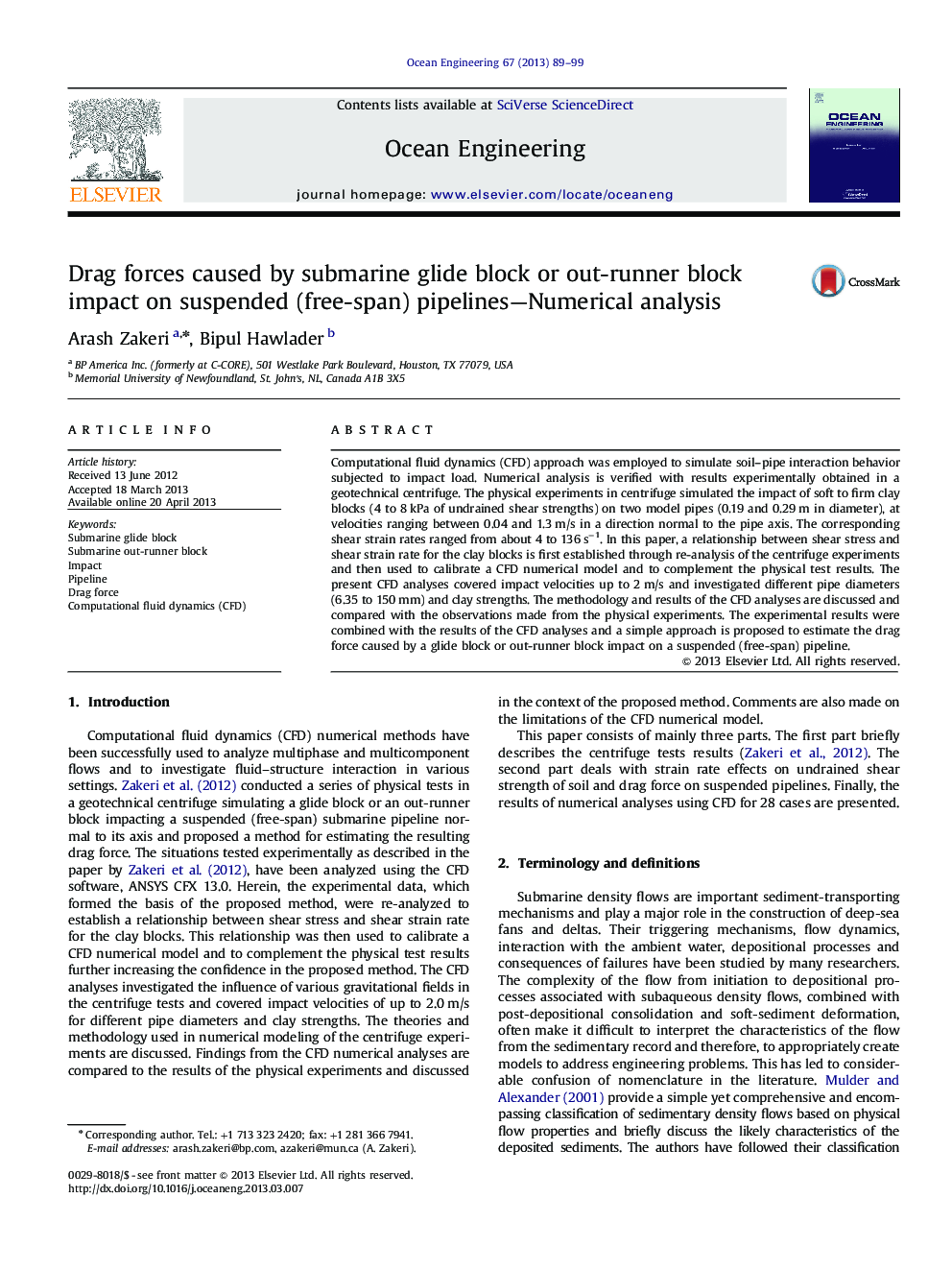| Article ID | Journal | Published Year | Pages | File Type |
|---|---|---|---|---|
| 1725931 | Ocean Engineering | 2013 | 11 Pages |
•A method is presented for estimating glide block impact drag forces on pipelines.•A thorough review of methods on rate dependency of clay shear strength is presented.•Application of Computational Fluid Dynamics method for glide block impact is given.
Computational fluid dynamics (CFD) approach was employed to simulate soil–pipe interaction behavior subjected to impact load. Numerical analysis is verified with results experimentally obtained in a geotechnical centrifuge. The physical experiments in centrifuge simulated the impact of soft to firm clay blocks (4 to 8 kPa of undrained shear strengths) on two model pipes (0.19 and 0.29 m in diameter), at velocities ranging between 0.04 and 1.3 m/s in a direction normal to the pipe axis. The corresponding shear strain rates ranged from about 4 to 136 s−1. In this paper, a relationship between shear stress and shear strain rate for the clay blocks is first established through re-analysis of the centrifuge experiments and then used to calibrate a CFD numerical model and to complement the physical test results. The present CFD analyses covered impact velocities up to 2 m/s and investigated different pipe diameters (6.35 to 150 mm) and clay strengths. The methodology and results of the CFD analyses are discussed and compared with the observations made from the physical experiments. The experimental results were combined with the results of the CFD analyses and a simple approach is proposed to estimate the drag force caused by a glide block or out-runner block impact on a suspended (free-span) pipeline.
